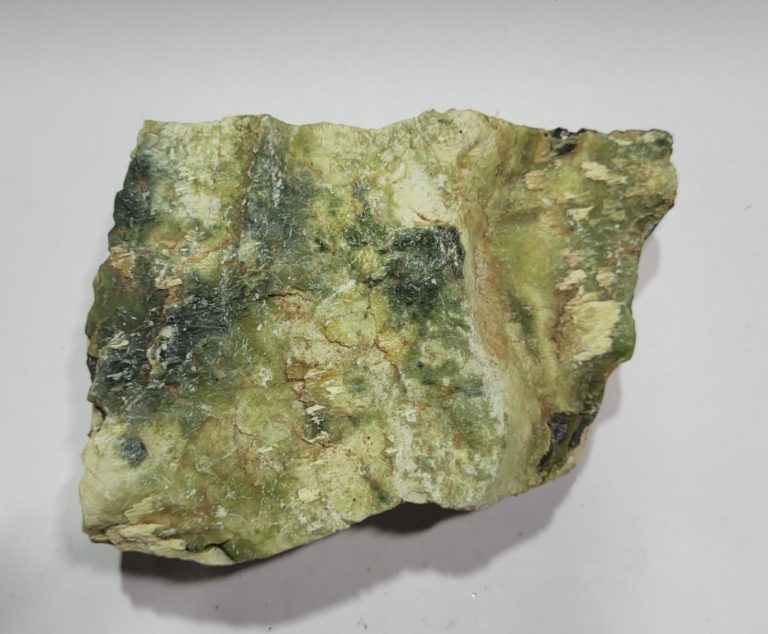Serpentinite
Type: Rock
Category: Metamorphic Rock
Chemical/Scientific/Etc. : Mg3(Si2O5)(OH)4 or (Mg2+, Fe2+)3Si2O5(OH)4
Description/Characteristics :
Serpentinite is formed by near to complete serpentinization of mafic to ultramafic rocks.
Serpentinite is formed wherever ultramafic rock is infiltrated by water that contain less carbon dioxide. This generally occurs at the mid-ocean ridges and in the forearc mantle of subduction zones.
Final mineral composition of serpentinite is usually dominated by lizardite, chrysotile and magnetite and antigorite are not generally present.
Lizardite, chrysotile, and antigorite all have approximately the formula Mg3 (Si2O5)(OH)4 or (Mg2+, Fe2+)3Si2O5(OH)4, but differ in minor components and in form. Accessory minerals, present in small quantities, include awaruite, other native metal minerals, and sulfide minerals
Place of collections: Cudsapah
Date/Month/year of Collection: 2022
Distribution: Notable occurrences of serpentinite are found at Thetford Mines, Quebec; Lake Valhalla, New Jersey; Gila County, Arizona; Lizard complex, Lizard Point, Cornwall; and in localities in Greece, Italy, and other parts of Europe.[23] Notable ophiolites containing serpentinite include the Semail Ophiolite of Oman, the Troodos Ophiolite of Cyprus, the Newfoundland ophiolites, and the Main Ophiolite Belt of New Guinea
Uses if any: Serpentine group minerals have a Mohs hardness of 2.5 to 3.5, so serpentinite is easily carved.[25] Grades of serpentinite higher in calcite, along with the verd antique (breccia form of serpentinite), have historically been used as decorative stones for their marble-like qualities. College Hall at the University of Pennsylvania, for example, is constructed out of serpentine. Popular sources in Europe before contact with the Americas were the mountainous Piedmont region of Italy and Larissa, Greece.[26] Serpentinites are used in many ways in the arts and crafts. For example, the rock has been turned in Zöblitz in Saxony for several hundred years
Collected by:




